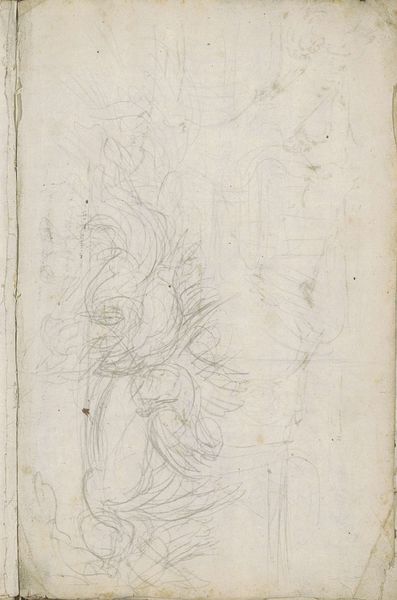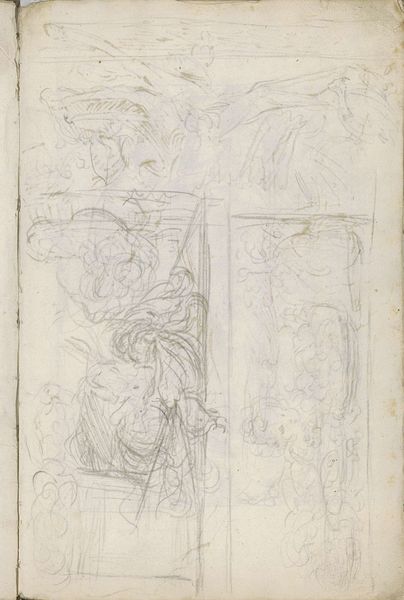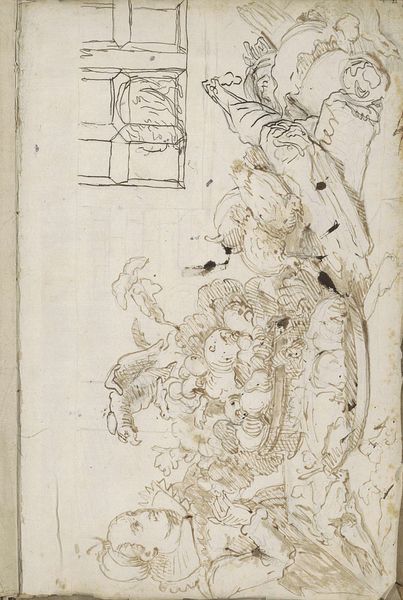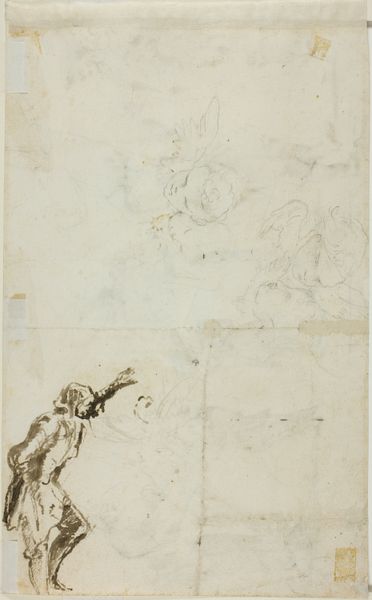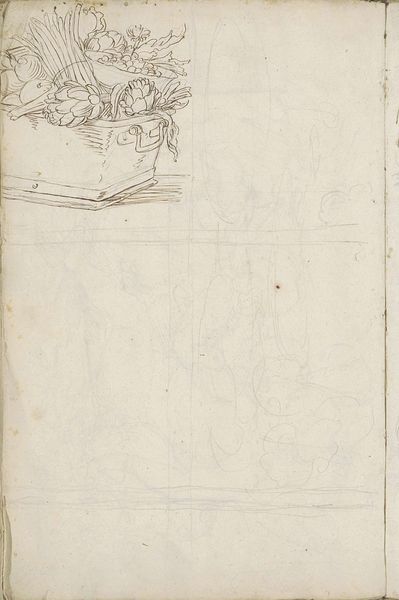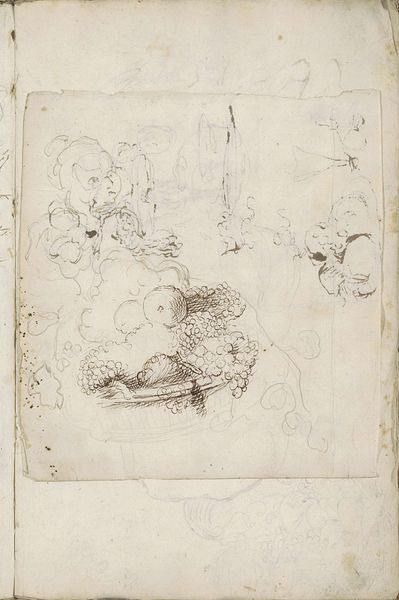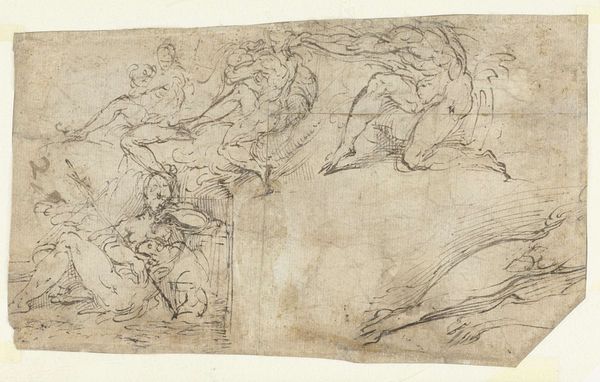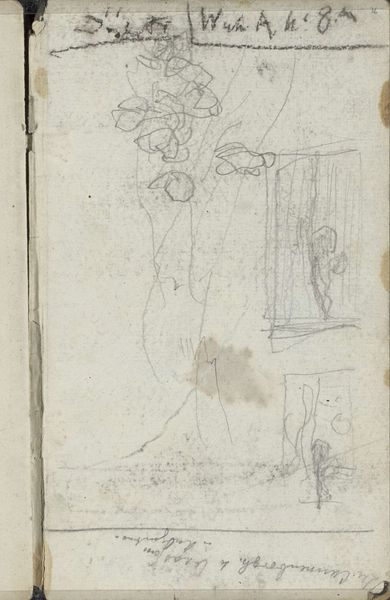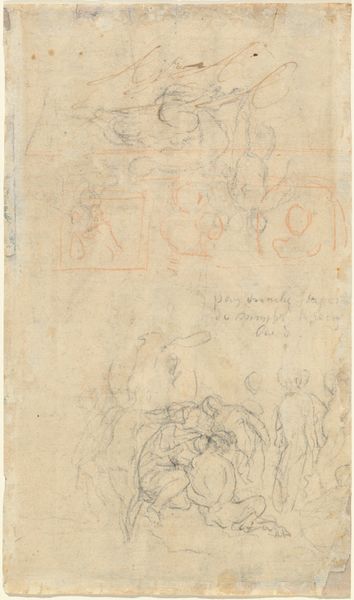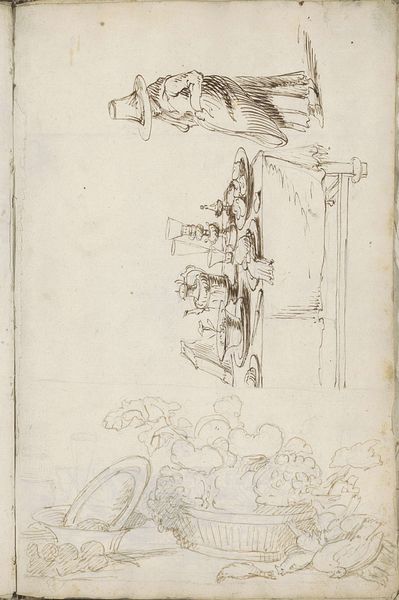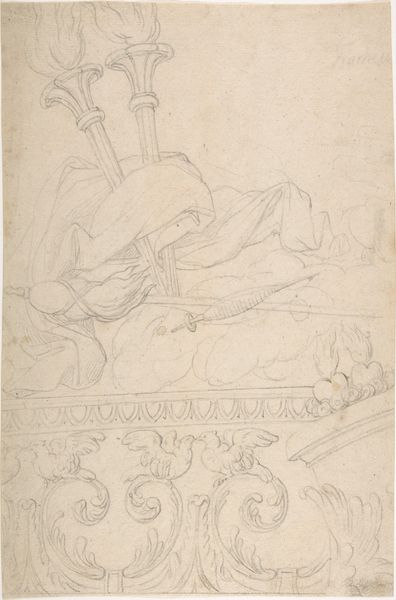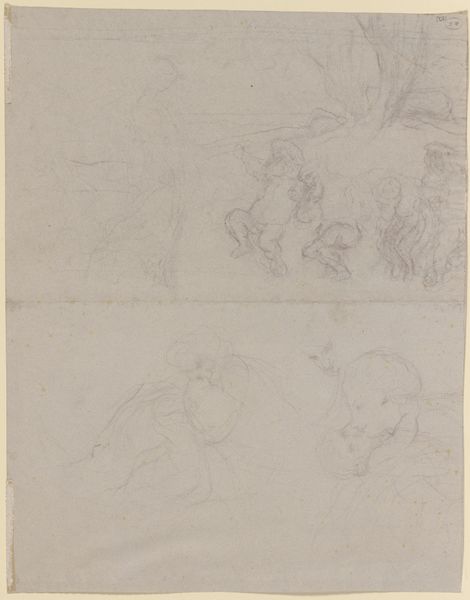
drawing, paper, pencil
#
drawing
#
baroque
#
bird
#
flower
#
paper
#
pencil
Copyright: Rijks Museum: Open Domain
Curator: Here we have, "Studieblad met vogels, een bloemenmand en venster," which translates to "Study Sheet with Birds, a Flower Basket, and Window," a pencil drawing on paper, created sometime between 1605 and 1678 by Paul de Vos. Editor: My immediate impression is one of delicacy and transience. The pale pencil strokes create an almost ethereal quality. It's fascinating how little detail is needed to suggest such vivid natural forms. Curator: Indeed. De Vos demonstrates masterful economy in his mark-making. Observe how the composition directs the eye through a series of loosely defined shapes – the bird, the suggested floral arrangement, culminating perhaps in a view from that window, top right. The drawing, with its tentative quality, could be viewed as de Vos working through preliminary compositional problems. Editor: Precisely. This preliminary status lends the piece an immediacy, a rawness which belies the social role art played at the time it was created. De Vos came from an artistic family; his brothers-in-law, Frans Snyders and Cornelis de Vos, also prominent painters. This study sheet, divorced from its place in his larger career and context, shows how artistic practices shaped each other across artistic communities in Baroque Europe. Curator: It is worthwhile to consider that art of this period was also used politically, to display one's mastery. Yet in these strokes, De Vos captures not merely a representation, but the intrinsic essence of movement, volume, light itself. I’m intrigued by the ambiguity of forms. Are those indeed flowers in a basket, or simply suggestions? Editor: Well, perhaps that very ambiguity prompts a necessary rereading of other period drawings. To me, the incompleteness of the sketches reminds us of the social status of “preparatory” works as lesser artifacts than finished painting. Only in more recent centuries would such a work be reevaluated outside these initial limitations, Curator: Absolutely. And from a formal perspective, the unfinished nature only intensifies its impact, almost becoming an accidental act of intentional aesthetic expression through suggestive shape-making. Editor: Looking at this sketch, then, is both a chance to reflect on shifting notions of what constituted 'Art' at the time, and to revisit the sociopolitical expectations underpinning Baroque Antwerp’s painterly circles. Curator: A sentiment I wholeheartedly echo. Such a drawing encapsulates both a specific, personal artistic exploration and larger historical currents.
Comments
No comments
Be the first to comment and join the conversation on the ultimate creative platform.
